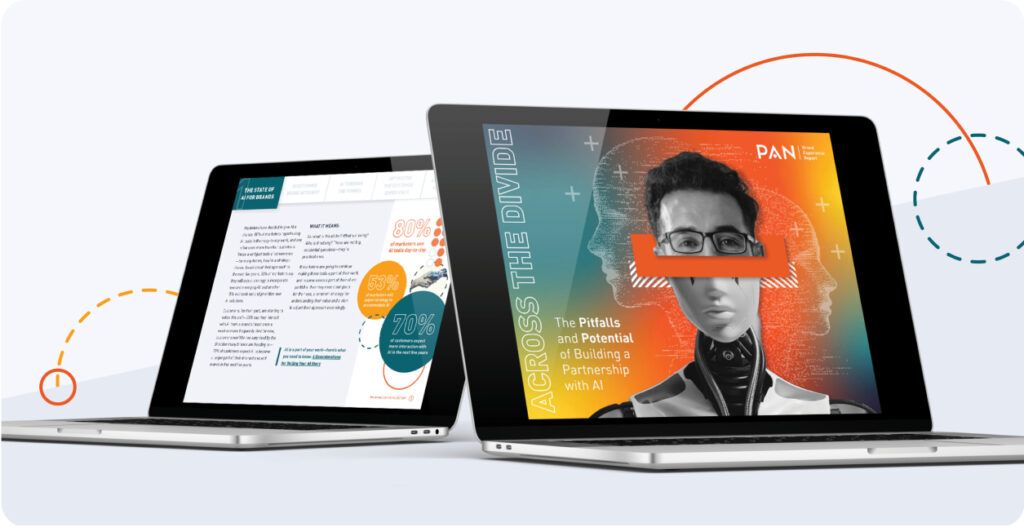Marketers are caught in a constant balancing act. We try to learn from the past, plan for the future and all the while we try to make the most of the moment we’re in now. All of that seems even more difficult in the past few years as uncertainty has become less a rough patch to be weathered and more a norm to accept.
In 2020 I wrote that brands needed to adjust their strategies to stay agile in the early days of the pandemic. Nearly three years on, the pandemic is not neatly a thing of the past, but the challenges have changed. Brands have had to adapt to new realities and will continue having to plan for what’s next in order to keep their audiences engaged and their brands front and center.
Economic headwinds are nothing new and we’ll continue to manage them as we shift into the new year. Brands will be pushed to think differently, and marketers will be tasked with maintaining awareness and driving quality leads amid the turbulence. More than ever, it’s critical that marketers not fly blind. Insight into your data and alignment of your tone and message to customers and in communication across channels will be essential as brands navigate a difficult economic landscape.
Headwinds don’t last forever and this too will pass. If we have learned anything from the previous downturns it’s that momentum is key — stay active, focused and lean into those programs that are showing resolve and results.
Raising the Return on Marketing — Part Two
Back in 2020 I read a Crunchbase article about the precautions and difficult decisions leaders needed to take to prepare for the ripple effects of the pandemic. The focus was on survival, but I wondered if the best teams could do more — what if we could come out of it stronger? I think of this as “planning for the rebound.”
In fairness, 2020 felt like a crisis. It was all unprecedented, entire industries ground to a halt, people prepared for the worst. This time, it feels a little different. Capital markets are slowing, but still remain relatively strong. EY reported in October that despite a significant drop in venture capital activity from last year, 2022 was still the second-highest investment year on record.
The other difference is that this time we’re ready for it. Marketers have a key seat at the table and the last thing any team should do is pull back and disappear. Reputation matters, visibility is critical, employee communication and retention are essential, and customer experience is the name of the game. It’s time — again — to step up to the plate and communicate with trust and conviction.
Increasing Your Expectations so the C-Suite Doesn’t Have To
Expectations will drive success, and in times like this it’s the expectations we set for ourselves that matter most. Rise to the opportunity by setting aside preconceived notions of ROI. In 2021, 28% of marketers saw proving the ROI of marketing activities as their top challenge. That fell to 21% entering 2022. It should be more and we can do better. Too often the thinking on ROI is siloed into content programs or paid initiatives or social engagement. Marketers now need to think big picture and through a holistic lens.
Let’s look at PAN for example. As an agency, we provide support to B2B brands through content, social, earned media and everything in between. We’re tasked with measuring the impact of each of these programs individually through our PANoptic measurement program. But when it boils down to making cuts during times of uncertainty, it’s the value of our entire program that truly matters.
In 2020 I advocated for keeping a daily or even hourly pulse on the progress of and response to your approach. Fortunately, we aren’t seeing the same pace of change that we were then, but marketers should still be taking weekly or monthly assessments of their programs and campaigns. Audit the content you planned back in January, shelf the topics that don’t align with current messaging and amplify the ones that guide your customers through a tense moment. Examine your tone, content types, thought leadership, voices of the employee and the customer, and lean on listening tools and data insights to anchor your strategy. This should be the foundation of the program if you don’t already have it.
If that means stretching beyond our limits, typical budgets or activities then so be it. Have conversations with your team, your C-Suite, or other departments to establish that resources will be stretched thinner, and that’s OK. It’s our way of showing support and letting our “partners in brand” know we are in this for the long haul.
Brands will be pushed to think differently, and marketers will be tasked with maintaining awareness and driving quality leads amid the turbulence. More than ever, it’s critical that marketers not fly blind.
And while the pressure of these adjustments may feel like it weighs heavily, it’s important to not lose the value of what brought marketers to where we are today: Partnership, creativity, transparency, accountability and most importantly, empathy.
Go that extra mile to show your love for the brand. Do your part and support your team in ways that extend beyond your typical responsibilities. Make adjustments that help the brand meet the emerging financial landscape while remaining optimistic about a future where positive news wins out and business brings joy again.
Don’t Lose Sight of the Value of Marketing
As expectations shift, remember that we are playing a critical role in the digital era. Content, employees and customers are one story, and experience drives the narrative. Marketers are now largely responsible for creating customer experiences from the point of inception to loyalty. Don’t lose sight of that value and continue to own that opportunity — and most importantly the voice.
When PAN was founded 27 years ago, we built the business strictly on PR and earned media. Since then, we’ve evolved to take CX and digital experience head on, and just recently we launched our Strategic Consulting Group to guide businesses through their most important and challenging moments. We love chasing a story, digging into the data and realizing the impact we can deliver on sales and revenue. Most importantly, we’ve continued to hone our formula for creating an excellent customer experience and adding undeniable value to any business.
Owning the Experience Economy
The experience economy isn’t going anywhere, and as it moves forward marketing teams need to be in the driver’s seat. As a team, and even as an industry, we need to own our responsibilities as strategists and decision-makers. If you planned high-risk or far-reaching programs in the smoother seas of 2021 and H1, don’t cancel them for good going into the new year — put them on pause and revisit the initiatives that have delivered ROI in the past. Think of it less as a return to the basics and more as building on a strong foundation.
Businesses are built in a down market. Brands looking to not just weather the storm but come through it with pace won’t run and hide — they’ll double down on proven strategies and lead with confidence and stability.



